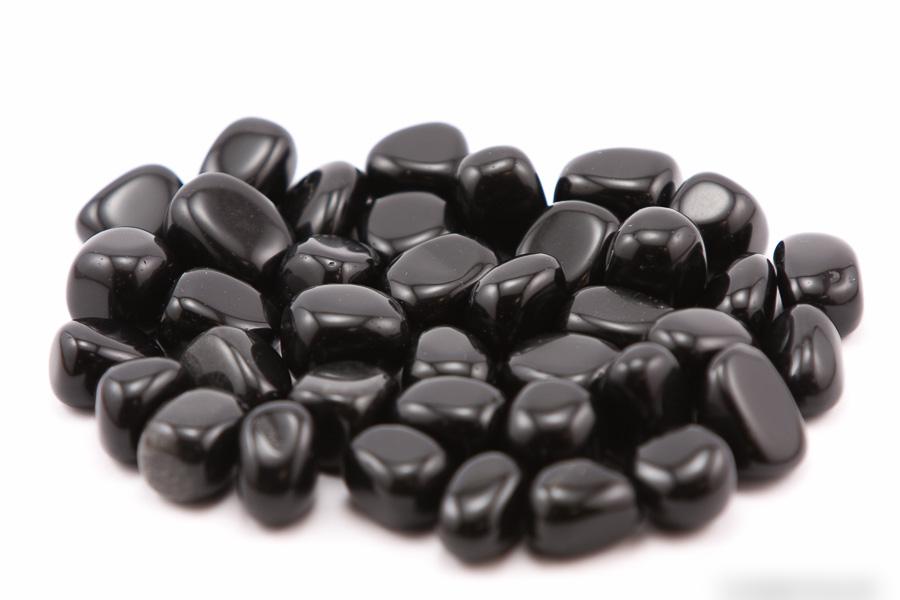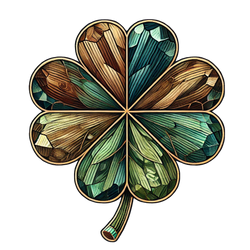You will not be allowed to compare more than 4 products at a time
View compareObsidian Tumbled 1 lb
Obsidian Tumbled 1 lb
Estimate delivery times:5-8 days.
Flat Rate Shipping and FREE Shipping on orders more than $100.
About This Product
Obsidian – Midnight Glass of Ancient Fire
Birthed in primal volcanoes and swiftly cooled into hardened glass, obsidian emerges as a glossy midnight-black stone with a mirror-like surface. Its polished facets gleam like captured starlight against a night sky, each reflecting the world around it. Smooth as still water yet forged in volcanic fire, this enigmatic gem invites touch and introspection in equal measure. In its depths lies the fusion of elemental chaos and serene beauty – a luxurious gift from Earth that captivates the eye and stirs the soul.
Historical and Cultural Significance
For millennia, obsidian has captivated civilizations with its combination of beauty and strength. In ancient Mesoamerica, it was prized beyond gold – knapped into razor-sharp blades and weapons that armed warriors and emperors. The Aztecs and Maya fashioned fearsome swords called macuahuitl, embedding obsidian shards along wooden clubs to create edges capable of inflicting devastating cuts. Aztec priests polished obsidian into mystic mirrors for divination, gazing into the dark reflection to conjure visions and prophecy; even the god Tezcatlipoca – deity of night and sorcery – bore the epithet “Smoking Mirror” in honor of this sacred stone’s power. In these cultures, a mere piece of volcanic glass became a bridge between the mortal and divine, a tool of war and a vessel of wisdom.
Obsidian’s allure spread far beyond its volcanic birthplaces. Across the ocean in Elizabethan England, the scholar and magus John Dee famously used a polished obsidian mirror from Mexico as a “scrying” device to seek angelic guidance and glimpse the unseen. Long before this, ancient Egyptians imported obsidian from distant lands to craft exquisite blades, ceremonial mirrors, and ornate inlays. The Roman author Pliny the Elder wrote of a jet-black volcanic glass called lapis obsidianus, said to be named after Obsidius – the explorer who discovered it in Ethiopia. Obsidian also weaves through Native American lore: one Apache legend tells how the tears of grieving warriors’ wives fell to the earth and turned to stone, forming small black pebbles known as “Apache Tears” – a symbol of sorrow transformed into strength. From the Stone Age to the age of empires, obsidian has been a substance of myth and meaning, its legacy etched into arrowheads, sacred objects, and stories passed down through time.
Spiritual Symbolism and Metaphysical Meaning
In the realm of crystal energy, obsidian is revered as a guardian and guide. It is often hailed as a powerful grounding stone, one that anchors the spirit to the Earth’s core and imparts a steady, stabilizing presence. Many consider obsidian a psychic shield – a stone of protection that absorbs negativity and transmutes darker energies into light. Resonating deeply with the root chakra, it helps establish a sense of safety and strength, keeping you centered when chaos surrounds you. Holding a piece of this volcanic glass can feel like an energetic homecoming: a calm, reassuring weight that guards your aura and balances your emotional state.
Obsidian is also celebrated as the “Stone of Truth,” a mirror for the soul’s hidden depths. Its reflective black surface invites you to peer inward and confront the shadows within – those aspects of ourselves we often bury or ignore. Rather than instilling fear, obsidian encourages courage: it reveals personal truths and patterns, however dark, so that they can be acknowledged and healed. This makes it a potent ally for shadow work and deep spiritual cleansing. Gazing into obsidian (as shamans and seers have done for ages) is like looking into a midnight pool – it helps strip away illusions and ego defenses, bringing buried emotions to the surface for transformation. Through this introspective power, obsidian guides you toward clarity, self-awareness, and emotional release. In meditation or ritual, it can accelerate personal growth, cutting through negativity with bold honesty and lighting the path to your authentic self.
Luxury, Collector, and Decorative Appeal
Beyond its spiritual virtues, obsidian possesses an undeniable luxury appeal. When expertly polished, its glassy surface takes on a high sheen reminiscent of black marble or onyx, yet with a depth entirely its own. Interior designers and art collectors adore the drama it brings – a piece of obsidian décor instantly becomes a focal point, whether as a sleek sculptural object, a carved bowl, or an obsidian sphere catching the light in a modern sanctuary. The contrast of its jet-black color in well-lit spaces exudes sophistication and mystique. Connoisseurs display obsidian arrowheads, carved figurines, and even large geologic specimens on museum-like stands, appreciating them as natural art. Indeed, obsidian has long been used for ornamental purposes and even cut en cabochon as a gemstone, yielding striking jewelry and décor pieces that showcase its glossy allure.
Obsidian also finds its way into fine jewelry and couture accessories. Jewelers often shape this stone into silky smooth beads or lustrous cabochons, accenting them with gold or silver to create bold necklaces, earrings, and rings. The result is dramatic yet elegant – the perfect statement piece for those drawn to its intense beauty. Despite being relatively common in volcanic regions, high-quality obsidian has a refined, exclusive aura when set in jewelry, as if wearing a fragment of the night itself. Collectible knives and blades featuring obsidian edges are another intersection of art and function; master knappers and blade-smiths produce obsidian knives with carved handles that are sought by aficionados for their beauty and unparalleled sharpness. In fact, an obsidian edge can be sharpened to only a few nanometers thick – far keener than steel – and modern surgeons have even experimented with obsidian scalpel blades for ultra-fine incisions. Whether adorning an altar, a living space, or one’s own body, obsidian brings an element of bold luxury and primal elegance that is both contemporary and timeless.
Scientific Profile and Properties
-
Formation & Type: Igneous – a naturally occurring volcanic glass formed when high-silica lava cools extremely rapidly, preventing crystal growth. (Obsidian is amorphous, not a true mineral, due to this quick solidification.)
-
Hardness: Approximately 5 to 6 on the Mohs scale, meaning it is moderately hard – capable of being polished to a shine, though softer than crystalline quartz.
-
Composition: Dominated by ~70% silicon dioxide (SiO₂) with the remainder being oxides of aluminum, iron, magnesium, calcium, and sodium. Chemically, it’s similar to rhyolitic lava (felsic), giving obsidian a high silica content.
-
Structure & Fracture: Amorphous (glassy) internal structure – no crystalline order. Breaks with a conchoidal fracture, meaning it flakes into curved, shell-like surfaces with ultra-sharp edges. (This trait made it invaluable for prehistoric blades and gives it the ability to be crafted into surgical-quality sharpness.)
-
Luster: Vitreous – displays a brilliant, glassy luster. When polished, its surface is highly reflective, almost mirror-like.
-
Color: Typically black or deep brown. Can also appear in hues of gray, silver-gray or mahogany (red-brown streaked) depending on impurities. Rarely, obsidian can be nearly clear or have colorful iridescence.
-
Notable Varieties: Snowflake Obsidian – black obsidian with white spherulite inclusions of cristobalite, forming snowflake-like patterns. Golden Sheen Obsidian – shows a chatoyant golden glow due to gas bubble layers in the glass. Rainbow Obsidian – contains microscopic mineral inclusions causing an iridescent rainbow sheen or banding when light hits it. These variations add to obsidian’s collectible and aesthetic appeal.
-
Major Sources: Found in volcanic regions worldwide. Prominent sources include Mexico (long treasured by Mesoamerican cultures), the western United States (such as California, Oregon, and Yellowstone area), Italy (Lipari Island), Greece (ancient Milos), Turkey (Anatolia), Japan, and Indonesia, among others. Essentially, wherever volcanoes have produced high-silica lava flows, deposits of obsidian may be found.
-
Distinctive Features: Lacks a crystal structure (a mineraloid). Often found in association with volcanic features like rhyolite domes and lava flows. Its conchoidal fracture yields edges sharper than steel, identifiable in the razor-like flakes along broken surfaces. Obsidian artifacts can be sourced to specific volcanoes by their trace elements, a fact archaeologists use to trace ancient trade routes. Over geologic time obsidian can weather or “devitrify” into perlite, but fresh surfaces will have that telltale glassy smoothness.
Obsidian is a stone of paradox: born of fire yet cool to the touch, dark as midnight yet shining with light. It carries a piece of Earth’s volcanic heart within it. Whether you are a spiritual seeker, a collector of fine minerals, or an interior designer looking for a statement of bold elegance, obsidian offers a profound connection to nature’s artistry and a touch of volcanic luxury.
Sub total:
$21.49





 $20.49
$20.49 $55.49
$55.49